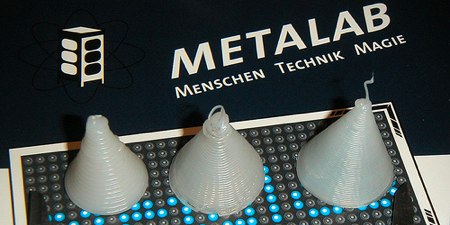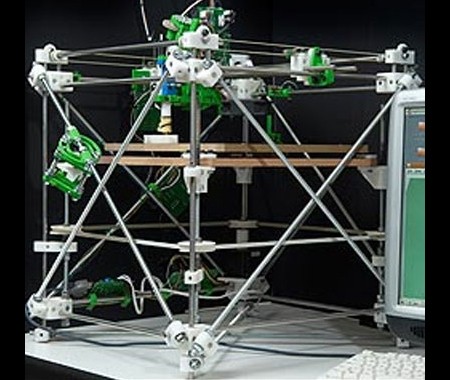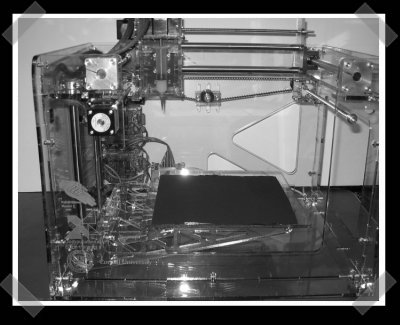
Today at The Last HOPE, [Far McKon] from Philadelphia’s Hacktory presented on community fabrication. Over the last few years we’ve seen a lot of different accessible rapid prototyping machines created. There’s the RepRap, a fabrication machine that has achieved self replication; our friends at Metalab have gotten their own version of the machine running too. The Hacktory has recently acquired a Fab@home machine. Fab@home hopes to make manufacturing using multiple materials accessible to home users. Multiple materials means people have constructed objects that vary from embedded circuits to hors d’oeuvres. We can’t talk about edible prototyping without bringing up the CandyFab machine, which fuses sugar. The Hacktory has enjoyed their machine so far, but have found the learning curve fairly difficult. While it’s great to see the cost of rapid prototyping dropping, we’ll be much happier when the ease of use improves.
rapidprototyping4 Articles
Custom Modular Control Interfaces

Machinecollective.org is bringing rapid prototyping to every day artists and hackers. We’ve covered similar interfaces like the monome, MIDIbox, and Stribe. Machinecollective allows you to make your own input system using multiple blocks to get exactly what you want. The setup allows you to fit pretty much anything in a block that you can think of. They’re developing potentiometers, slide potentiometers, button grids, toggle switches, LCD’s, FSR/LDR’s, velocity sensitive pads, and touch screens.
Currently, they support software enviroments like: Processing, Max/MSP, VVVV, and Adobe Flash. That list will undoubtedly grow as the community plays with it. They envision the hardware connecting via MIDI, OSC, RS232, TCP/UDP, DMX, or USB.
They encourage others to design their own inputs. Community members can share modifications and designs, though there isn’t a forum or store yet. If you design a setup that you really like, they can even fabricate a single unit for you. Keep your eyes on this one, it could be a real hit.
A similar idea for general gadgetry can be seen over at Bug Labs. Starting with a base unit, you can add different input and output modules to create various useful functions. They currently offer GPS, a camera, a display, and motion sensing. Mix and match to make your dream gadget.
RepRap Universal Constructor Achieves Self-replication

RepRap, the self-replicating universal constructor has had our attention since it first started spitting out globs of shapeless goo, but its speculative potential turned in a real benchmark recently when a RepRap machine made parts for an identical machine in a few hours (a child, in other words), then the second RepRap successfully made parts for a third or grandchild machine.
RepRap does not fully assemble copies of itself, but produces the 3D-printed plastic components necessary to assemble another copy. It has also successfully produced other plastic goods like sandals and coat hooks. [Dr. Adrian Bower] is the leader of the RepRap team, and he will be exhibiting its capabilities at this week’s Cheltenham Science Festival.
[via BoingBoing]
Fab@home

I’ve received a few tips on this, and somehow it keeps slipping by. The fab@home project immediately reminds me of reprap. This is a completely open source hardware project for rapid prototyping/3d modeling. In the past, manufacturing something like a turkey baster bulb required injection molding. The project wiki has full details on building your own, including manufacturing houses to get all the acrylic laser cut. It looks like you could get your hands on one of these pretty easily if you don’t mind making a dent in your wallet. Thanks to [nickjohnson] and [peter B]. [peter B] also noted that the cornell boys have an even nicer one that they use to make zinc-air batteries and artificial muscles.
If you happen to be in Berlin on December 27th, you might want to sign up for Fabienne’s wifi detector hacking workshop at 23c3.










